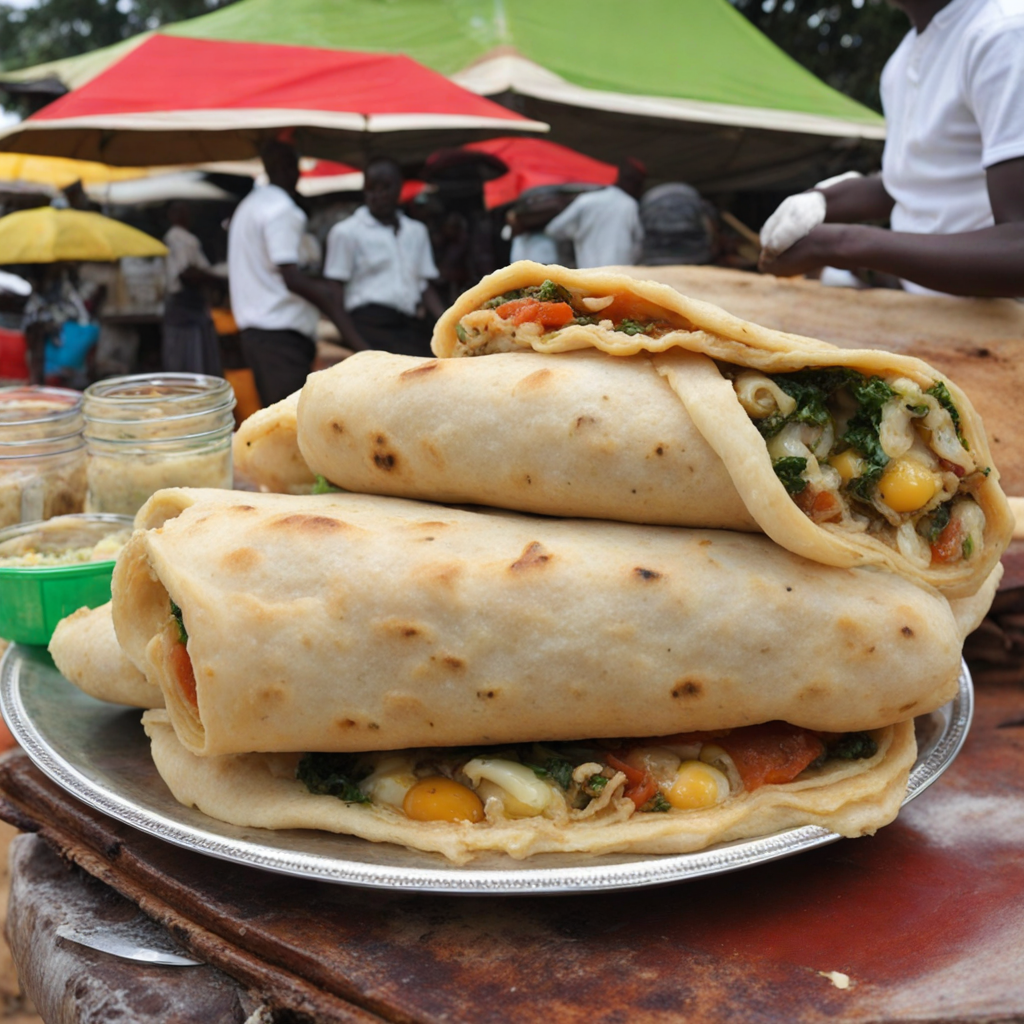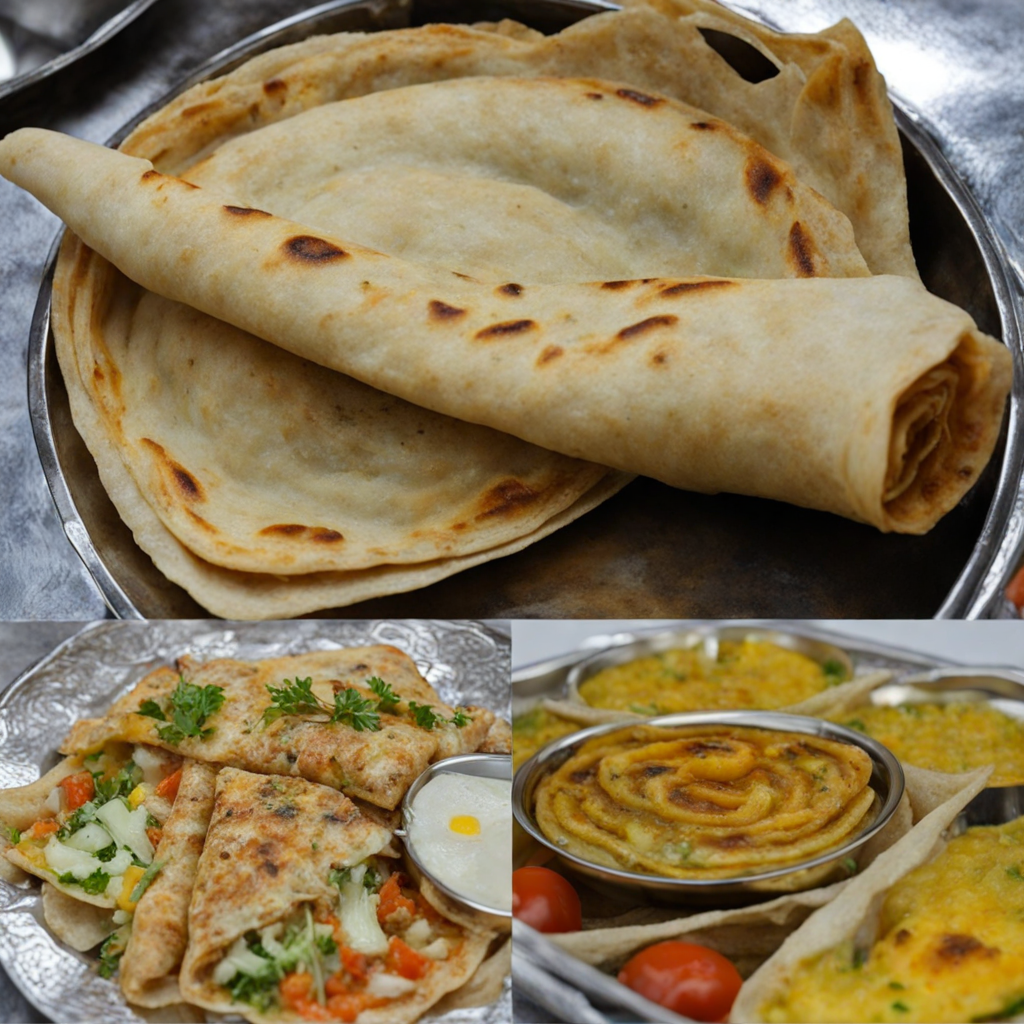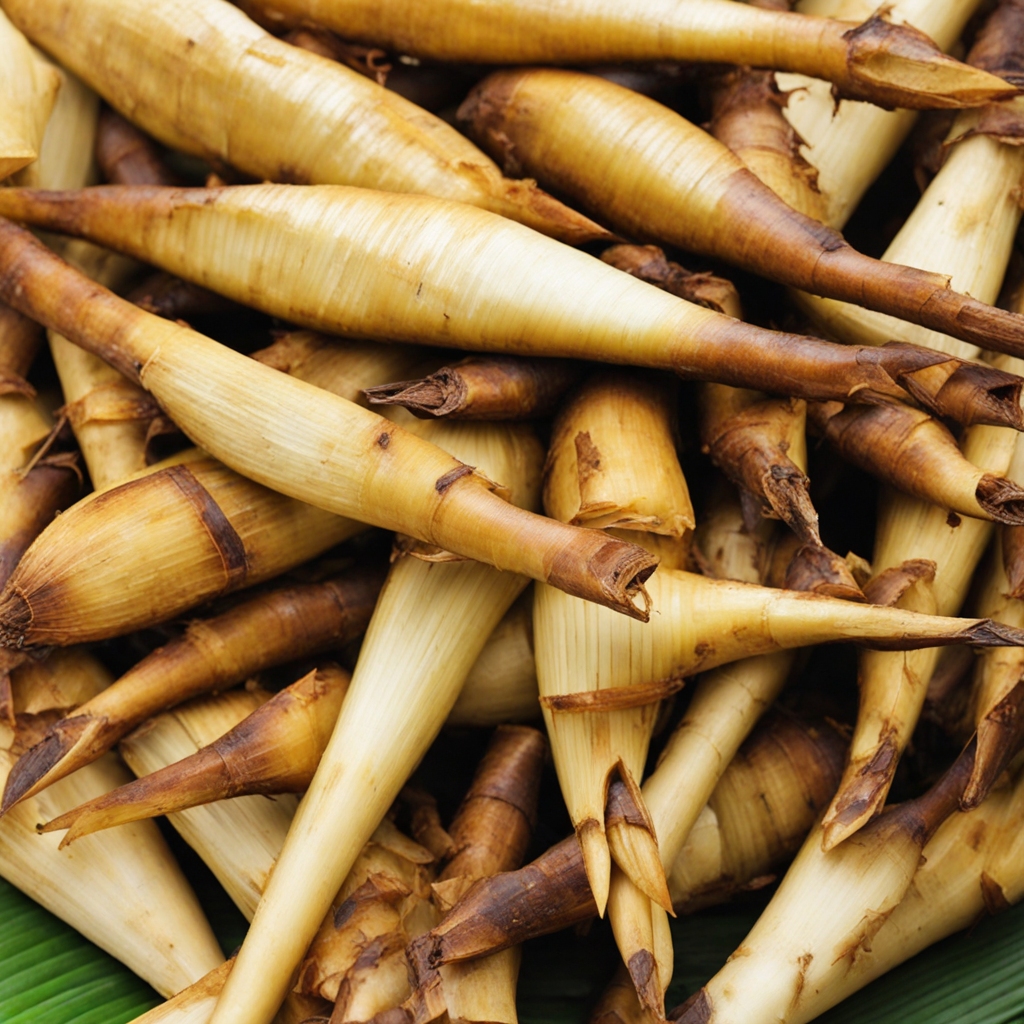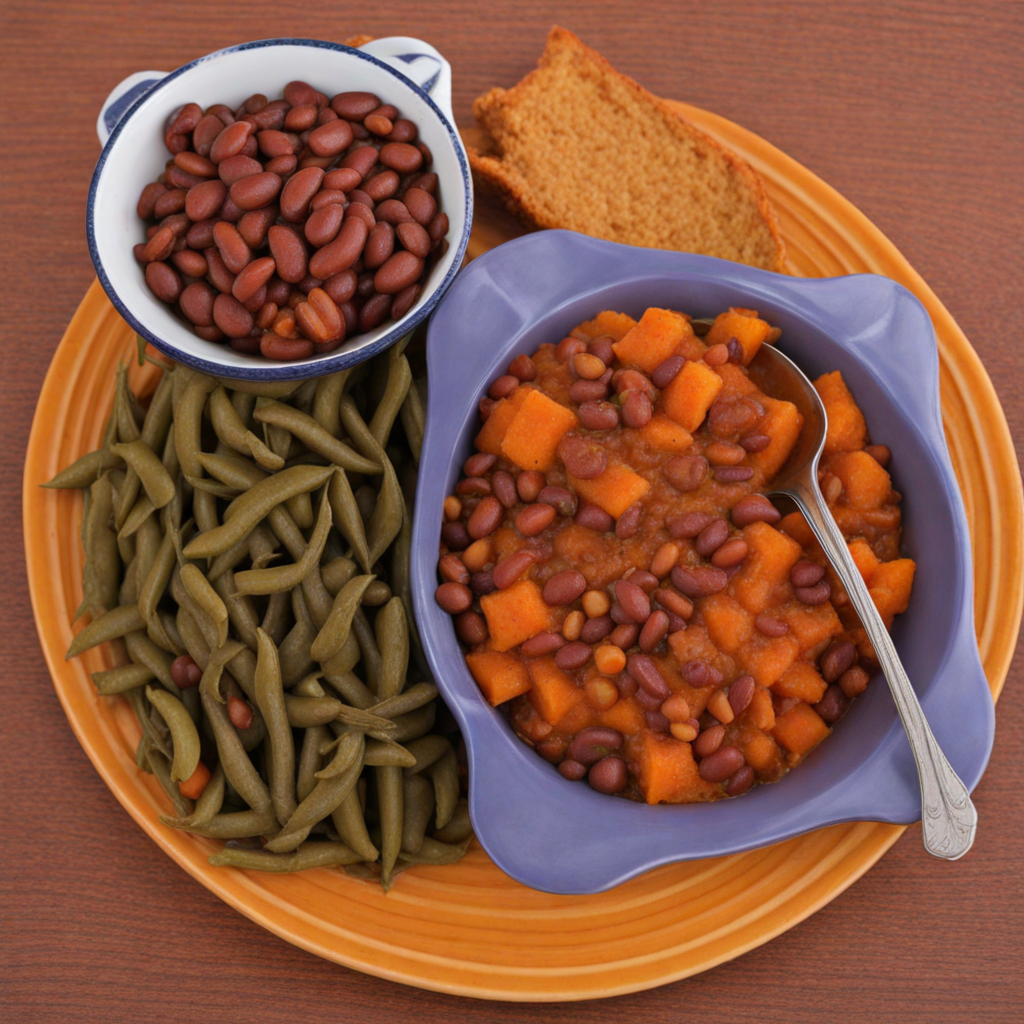Rolex
Rolex is a delicious and vibrant street food originating from Uganda, beloved for its simplicity and rich flavor. At its core, a Rolex consists of a chapati—a soft, unleavened flatbread—rolled around a savory filling made primarily of eggs. The eggs are often whisked and cooked with an assortment of fresh vegetables, including tomatoes, onions, and sometimes green peppers, creating a delightful combination that bursts with flavor. This dish is not only satisfying but also a reflection of the local culture, where street vendors skillfully prepare it in front of eager customers, making it a delightful on-the-go treat.
How It Became This Dish
The History of Rolex: Uganda's Culinary Treasure When one thinks of Uganda, images of stunning landscapes, rich biodiversity, and vibrant cultures come to mind. Yet, nestled within this tapestry of life is a culinary gem that tells a story of innovation, adaptability, and cultural significance: the Rolex. This popular street food delicacy, not to be confused with the luxury watch brand, has become a symbol of Ugandan cuisine, embodying the spirit of the nation through its unique flavors and communal essence. #### Origins of the Rolex The Rolex has its roots in the bustling streets of Kampala, Uganda's capital, where it emerged in the early 1990s. The name “Rolex” is believed to be derived from the phrase "rolled eggs," which reflects its central ingredient. The dish consists of a chapati—an unleavened flatbread—filled with a mixture of eggs and a variety of vegetables, often including tomatoes, onions, and green peppers. Some versions may even include meat or additional spices, offering a diverse array of flavors to suit different palates. The genesis of the Rolex is often attributed to street vendors who sought to create an affordable yet nutritious meal that could be easily consumed on the go. In a city where time is often of the essence, this quick, handheld meal filled a niche by providing sustenance for busy workers and students alike. The Rolex quickly gained popularity, thanks to its satisfying nature and the ease with which it could be prepared and sold. #### Cultural Significance The Rolex is more than just food; it is a cultural phenomenon that encapsulates Uganda's communal spirit and culinary creativity. It is commonly sold at roadside stalls, bustling markets, and food fairs, making it a staple of urban life. For many Ugandans, the act of enjoying a Rolex is not just about the meal itself but also about the experience of sharing it with friends and family. The dish has transcended its humble origins to become a symbol of national identity. It reflects the resourcefulness of Ugandans, who have adapted the simple elements of their traditional diet—such as maize, beans, and vegetables—into a modern, on-the-go version. The Rolex has even inspired culinary competitions and festivals, where vendors showcase their unique takes on the dish, fostering a sense of community and pride in local cuisine. Moreover, the Rolex has also played a role in bridging cultural divides. As it gained popularity, the dish began to attract attention from tourists and expatriates, showcasing the rich culinary diversity of Uganda. This has led to a growing appreciation for Ugandan cuisine on the global stage, with the Rolex often being highlighted as a must-try dish. #### Development Over Time As Uganda has evolved—socially, economically, and politically—so too has the Rolex. The 1990s, when the dish first gained traction, marked a time of transformation in Uganda. Following years of political instability, the country began to stabilize, leading to increased urbanization and a burgeoning middle class. The Rolex, with its affordability and convenience, became emblematic of this new era, representing hope and resilience. In the early 2000s, the Rolex began to gain traction outside of Kampala, spreading to other cities and even rural areas. Vendors began experimenting with ingredients, leading to a variety of regional adaptations. In some areas, the chapati might be substituted with other types of bread, while the fillings could include local specialties like avocado, groundnut (peanut) sauce, or even fried plantains. This adaptability has allowed the Rolex to remain relevant and appealing to a wide range of tastes. The advent of social media in the late 2000s further propelled the Rolex into the limelight. Photographs of this colorful dish began circulating online, capturing the attention of food lovers both locally and internationally. Influencers and travel bloggers highlighted the Rolex as a must-try item when visiting Uganda, leading to a surge in interest from tourists. This exposure not only benefited street vendors but also sparked conversations about the importance of preserving traditional culinary practices in a rapidly globalizing world. Today, the Rolex can be found in various forms across Uganda and beyond. Food trucks and modern eateries have started featuring gourmet versions of the dish, elevating it with high-quality ingredients and creative presentations. Restaurants in major cities outside Uganda, such as London and New York, have begun to include Rolex on their menus, introducing this beloved street food to new audiences. #### Contemporary Challenges and Future Prospects While the Rolex has enjoyed a meteoric rise in popularity, it also faces challenges as Uganda navigates the complexities of modernization and globalization. Urbanization has led to increased competition among street food vendors, and many struggle to maintain their livelihood amidst rising costs and regulatory pressures. Additionally, the rapid spread of fast food chains poses a threat to traditional street food culture, including the Rolex. However, the resilience of Ugandan street food culture is evident in the ongoing passion of vendors and the loyal customer base they have cultivated. Efforts are being made by local governments and organizations to support street food vendors, recognizing their contribution to the economy and cultural heritage. Moreover, the Rolex's versatility ensures its continued relevance in the culinary landscape. Its ability to adapt to new flavors and dietary trends—such as vegetarian or gluten-free options—positions it well for the future. In an era where there is a growing emphasis on sustainability and local sourcing, the Rolex can serve as a model for how traditional foods can evolve while staying true to their roots. #### Conclusion The Rolex is more than just a dish; it is a narrative of Uganda—a story woven through the fabric of its people, culture, and history. It embodies the creativity and resilience of a nation that has faced challenges yet continues to celebrate its culinary heritage. As the world becomes increasingly interconnected, the Rolex stands as a testament to the power of food to bring people together, bridge cultural divides, and celebrate the richness of diversity. Whether found at a bustling street corner in Kampala or enjoyed in a distant city, the Rolex is sure to remain a beloved symbol of Ugandan identity for generations to come.
You may like
Discover local flavors from Uganda







